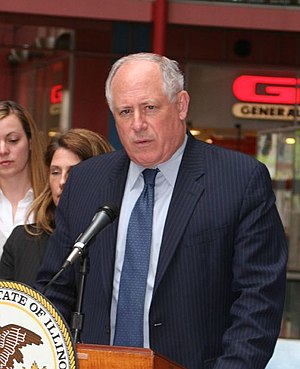In his State of the Union speech, President Obama called for states to increase the minimum age at which students can drop out of high

school, but people are questioning whether it will actually positively influence teenagers to stay in class.
At least one student questions whether it will do much good.
“Rather than spending time discussing whether they should increase the dropout age, [our administration] needs to have people actually talk to us about what it means to stay in school,” said Ashley Walker, 18, a senior at Lincoln Park High School in Chicago.
“They should take the time to tell us what will happen if we don’t go to school.”
As it stands, Illinois students can drop out of high school at the age of 17. This was increased from the age of 16 in 2005. Illinois is one of 29 states in which students can drop out before the age of 18.
“If kids want to be on the streets they’re going to be on the streets,” said Walker, who will be graduating from Chicago Public Schools in the spring. “They should focus on educating us, and show us what staying in school can do for us.
Gov. Pat Quinn announced his support for raising the dropout age to 18 in his State of the State address. He hopes the dropout age will be raised to 18 by this time next year.
“We support seeing kids stay in school and graduating and believe that raising the dropout age to 18 would mean that more kids are going to get their diploma,” said Matt Vanover, spokesman for the Illinois State Board of Education.
Vanover said increasing the dropout age to 18 should have gone into effect years ago. Following the increase from 16 to 17 years of age, Illinois saw a reduction in the dropout rate from 4 percent to 2.7 percent.
“There are some good ideas behind raising the dropout age, but it doesn’t always work out the way you’d want it to,” said Sarah Karp, deputy editor for Catalyst Chicago, an independent print and online newsmagazine which documents, analyzes and supports school-improvement efforts in the Chicago Public Schools.
Karp said that instead of encouraging students to graduate, changing the dropout age may only effect when the student’s status in the school’s classification system will change from “chronically truant” to “drop out.”
Increasing the dropout age to 18 alone will not keep kids in school, so school administrations need to focus on engaging the students more, said Karp: “Just because you raise the dropout age, it doesn’t necessarily mean fewer kids are going to drop out.”
Indiana’s legal dropout age was set at 18 in 2005, and the 2008-2009 school year had a graduation rate of 81.5 percent, increasing 3.7 percent from the year before. In 2009, 70 percent of public high schools graduated 80 percent or more of their senior class, according to a report by WANE-TV, a local Indiana news organization.
Meanwhile, Maryland allows students to drop out at the age of 16, and Education Week, a national newspaper covering primary and secondary education, ranked the state’s public school system number one for the fourth consecutive year. For Maryland’s graduating class of 2011, 87 percent of students received a high school diploma, according to a report by the Washington Post.
“Enforcing education is a good idea, but I think they’re taking the wrong approach about it,” said Walker. She said she has seen friends of hers drop out and she isn’t sure if increasing the legal dropout age would’ve changed anything.
Walker said that if students were well informed about the importance of getting a high school diploma, they would be less likely to drop out regardless of their age. “We need to be told the full stories,” she said.
Related articles
- Should the Dropout Age Be Raised? (learning.blogs.nytimes.com)
- Brizard: Raising Dropout Age To 18 Is A ‘Wonderful Idea’ (chicago.cbslocal.com)
- Obama Wades Into Issue of Raising Dropout Age (nytimes.com)







Be First to Comment